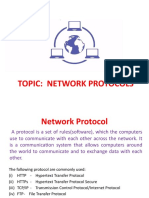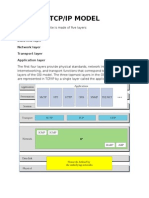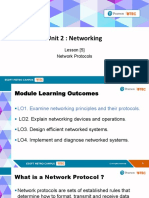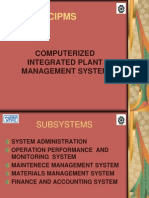0% found this document useful (0 votes)
23 views4 pagesKey Internet Protocols Overview
The document outlines various Internet protocols, including FTP, HTTP, SNMP, SMTP, POP3, TCP, UDP, and IP, detailing their purposes, types, and functionalities. Each protocol serves a specific role, such as file transfer, web communication, network management, email transmission, and data integrity. The notes emphasize the characteristics and operational mechanisms that distinguish each protocol.
Uploaded by
business31043104Copyright
© © All Rights Reserved
We take content rights seriously. If you suspect this is your content, claim it here.
Available Formats
Download as PDF, TXT or read online on Scribd
0% found this document useful (0 votes)
23 views4 pagesKey Internet Protocols Overview
The document outlines various Internet protocols, including FTP, HTTP, SNMP, SMTP, POP3, TCP, UDP, and IP, detailing their purposes, types, and functionalities. Each protocol serves a specific role, such as file transfer, web communication, network management, email transmission, and data integrity. The notes emphasize the characteristics and operational mechanisms that distinguish each protocol.
Uploaded by
business31043104Copyright
© © All Rights Reserved
We take content rights seriously. If you suspect this is your content, claim it here.
Available Formats
Download as PDF, TXT or read online on Scribd
/ 4


































































































